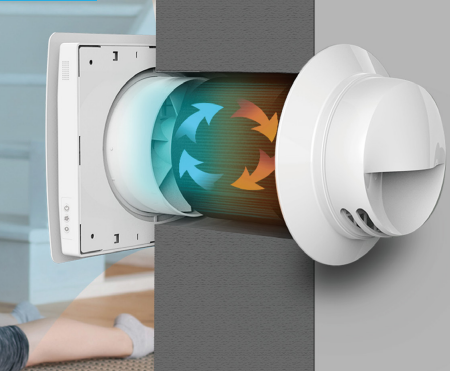7 Signs You Could Benefit From HRV in Your Home
Wiki Article
Exploring the Advantages of Heat Recovery Ventilation for Energy Effectiveness in Homes
Heat Recovery Ventilation (HRV) systems offer homeowners a useful strategy to improving power effectiveness. By reclaiming warm from outward bound air, these systems can significantly decrease heating & cooling expenses. Additionally, they provide a stable supply of fresh air, improving interior air high quality and convenience levels. As house owners think about sustainable choices, comprehending the nuances of HRV systems ends up being significantly vital. What variables should one review before making such an investment?Understanding Heat Recovery Ventilation Solutions

How HRV Improves Indoor Air Quality

Power Cost Savings: The Economic Advantages of HRV
Maximizing power effectiveness, heat recovery ventilation (HRV) systems supply substantial financial benefits for house owners. By recuperating and recycling warm from exhaust air, HRVs markedly reduce heating & cooling prices. This modern technology can bring about power financial savings of up to 30%, depending on environment and use patterns. House owners usually see lowered utility bills soon after installment, making HRVs a financially wise investment over time. Additionally, numerous areas give rewards or discounts for energy-efficient upgrades, better enhancing the monetary charm. As power prices continue to rise, the cost-effectiveness of HRVs comes to be progressively clear. Overall, the unification of HRV systems not only advertises energy performance but additionally contributes to lasting monetary cost savings for houses.The Ecological Influence of Heat Recovery Ventilation
A considerable ecological advantage of heat recovery ventilation (HRV) systems hinges on their capacity to minimize general energy intake. By reclaiming warmth from exhaust air and transferring it to incoming fresh air, HRV systems lessen the demand for energy-intensive heating and cooling techniques. This decrease in power demand adds to decrease greenhouse gas exhausts, as less fossil fuel is required to maintain comfortable interior temperatures. Additionally, HRV systems improve interior air top quality by effectively exchanging stagnant air with fresh exterior air, lowering dependence on mechanical cooling systems that can damage the setting. On the whole, the application of HRV systems sustains sustainable living methods and straightens with worldwide efforts to combat climate modification by advertising energy effectiveness in property setups.
Selecting the Right HRV System for Your Home
Just how can homeowners guarantee they pick the right heat recovery ventilation (HRV) system for their requirements? They should assess their home's size and layout, as these elements affect airflow demands. Next off, assessing the system's performance rankings is vital, as higher scores show much better efficiency and power cost savings. House owners must likewise consider installment and maintenance prices, comparing various brands and versions for value. Additionally, it is essential to evaluate sound levels, as some systems run even more silently than others. Consulting with heating and cooling experts can supply tailored referrals based on specific home conditions. Taking a look at user testimonials and service warranties can help in making an informed choice, guaranteeing that the chosen HRV system effectively boosts indoor air high quality and energy performance.Frequently Asked Inquiries

How Typically Should I Clean or Keep My HRV System?
The frequency of cleaning or keeping a warm healing air flow (HRV) system typically depends upon usage and ecological variables. Generally, it is advisable to carry out maintenance every six months to ensure peak efficiency and air high quality.
Can HRV Equipments Aid Lower Humidity Degrees Inside?
HRV systems can efficiently lower indoor moisture levels by exchanging stagnant, moist air with fresh, drier air from outside. HRV Heat Recovery Ventilation. This process HRV Heat Recovery Ventilation helps maintain a well balanced interior atmosphere, enhancing convenience and stopping moisture-related issues
What Is the Life-span of a Common HRV System?
The life-span of a typical heat recovery ventilation (HRV) system varies, normally lasting between 10 to 15 years. Routine maintenance can extend its effectiveness and operational life, guaranteeing peak performance throughout its use duration.Are There Any Kind Of Sound Concerns With HRV Systems?
Sound problems with HRV systems can arise, particularly from follower operation. Nevertheless, several contemporary systems are created to reduce sound levels, ensuring they operate quietly while preserving performance, which deals with prospective disruptions in living environments.Can I Set Up an HRV System Myself, or Do I Need a Specialist?
The specific contemplated whether to mount the heat recovery ventilation (HRV) system personally or hire a specialist. Usually, while DIY installment is possible, expertise assurances proper performance and compliance with local building codes, boosting system performance.Report this wiki page